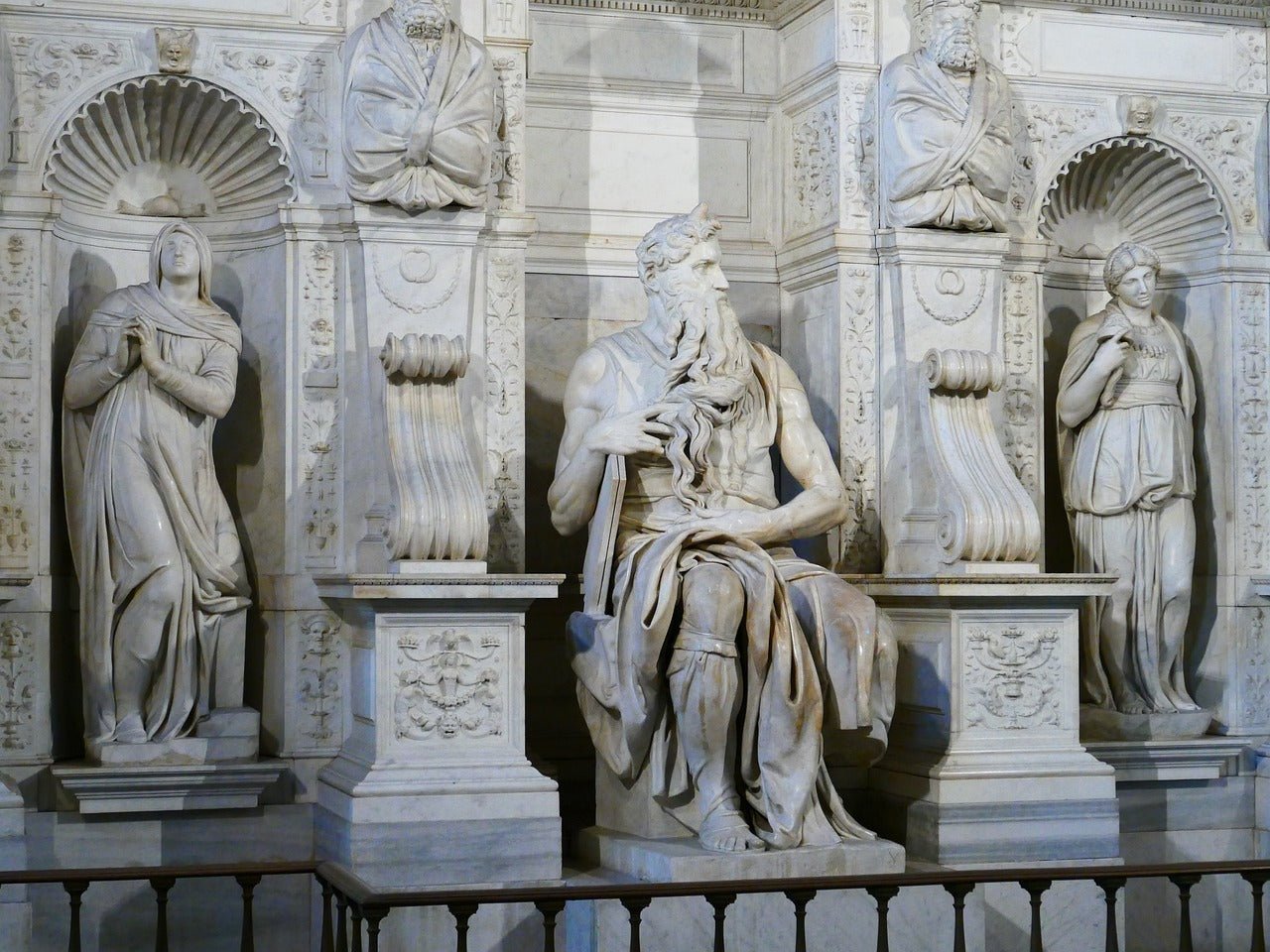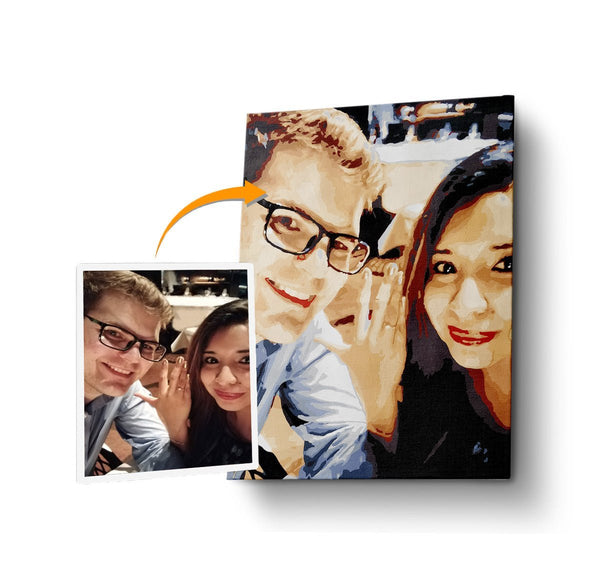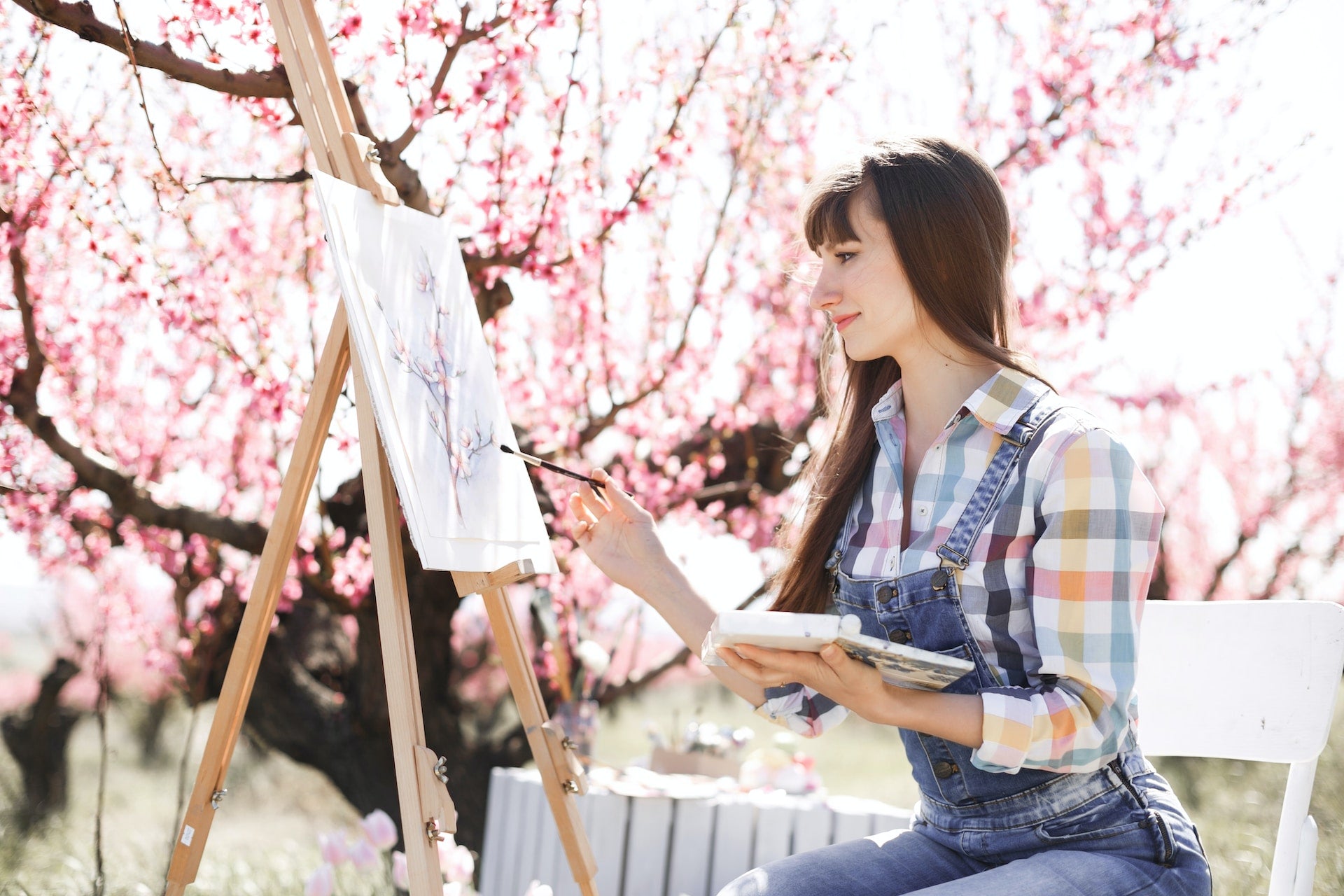
Michelangelo: His Life, Art, Philosophy, and More
The powers of the time's great master painters revolutionized the way we make and see art regarding classical realism, mannerism, and perspective during the Renaissance. They used their expertise and spirituality to change the concept of beauty. One of the painters accountable for this is none other than Michelangelo di Lodovico Buonarroti Simoni, who, together with Da Vinci and Raphael, is regarded as one of the great titans of the Italian Renaissance.
Michelangelo is a divine representation of human form and is regarded as one of the most important, skilled, and adored painters of the Italian Renaissance and art history in general. He is an artistic brilliance unrivaled by his contemporaries. He was regarded not just as a painter, but also as an architect and anatomist. He researched human anatomy to depict a precise figure in his artwork. Many scholars regard him as one of the forefathers of anatomy.
In this blog post, we'll be exploring the life of Michaelangelo Buonarroti, one of the most renowned artists of the Italian Renaissance. We'll examine his most famous works, his influences, and what made him such a celebrated artist.

The Life of Michelangelo
Michelangelo was born in 1475 in the Republic of Florence, which is now modern-day Italy. He was raised in Astanza dei Cavalieri or the House of the Knights of St. Stephen. This was a Florentine institution for the education of orphans and the sons of noble families. From a young age, Michaelangelo showed a great deal of talent in the arts. He was apprenticed to Domenico Ghirlandaio, a noted artist of the time, at the age of thirteen. He later studied under Bertoldo di Giovanni, a sculptor, and painter who had also been a student of Ghirlandaio.
It was during his time with Bertoldo that Michaelangelo first began to develop his unique style. He was also introduced to the philosophy of Neoplatonism, which would become a major influence on his work. After Bertoldo's death, Michaelangelo returned to Florence, where he completed some of his most famous works, including the Statue of David and the Sistine Chapel ceiling. While Michaelangelo is best known for his sculptures and paintings, he was also a highly skilled architect. He designed the Laurentian Library in Florence and the dome of St. Peter's.

Michelangelo’s Philosophical Ideals
One way to know the artist deeper is by studying his beliefs to understand better the context of his works. Accordingly, the Renaissance is a period of rebirth in terms of humanity’s intellect, hence why philosophy heavily influenced works of art. In this section, let’s take a grasp on the philosophy of Michaelangelo that was manifested in his creations.
On religion, faith, and spirituality
Michaelangelo's work was heavily influenced by his Christian faith. He believed that art should be used to glorify God and inspire piety in those who viewed it. This is evident in his paintings of Biblical scenes, such as the Last Judgement and the Sistine Chapel ceiling. However, Michaelangelo also drew inspiration from the human form. He believed that the human body was a work of art in itself, and he sought to capture its beauty in his sculptures.
He is perhaps best known for his statue of David, which is considered one of the most perfect examples of the male form in art. Michaelangelo was a highly controversial figure in his time. He was known for his temper and his scathing criticisms of other artists. However, his genius was undeniable, and he is now widely considered to be one of the greatest artists of all time.

On human intellect
While his colleagues emphasized the need for active process, experiment, and the unification of theory and application, he was fascinated by the concept of Ideas based on Platonic theory, often known as Plato's philosophy. In contrast to his contemporaries though, his philosophy on the "idea" was more important than real experimentation and execution.
As a result, he achieved harmony in antiquity between faith, history, and the Idea as an inspiration source. This balance offered him variety as an artist; he was not simply a painter, but also a maker of sculptures, and poetry, among others. He realized that his creativity was a depiction of how art started in one form, the ideal form.

On aesthetic principles
His sculptures, notably David, reflect his ideas on beauty. This statue received the highest accolades of its day, including from renowned art historian and artist Giorgio Vasari, who stated that "no other artwork is equal to it in any aspect, with such just proportion, beauty, and quality did Michelangelo finish it."
Impersonating the human body was thus the ultimate goal of the artist and it was the closest art could get to God. Beauty, to him, is an ambition for moral virtue with a touch of tragedy. His concept of beauty is separated into two unique characteristics: natural beauty and the sublime, which surpasses physical and anthropogenic historical beauty. He once wrote, “The true work of art is but a shadow of the divine perfection.”
The Art of Michelangelo
Criticisms
It is hard to believe that a talented artist like Michelangelo can be criticized. Many opposed Michelangelo, claiming that he had built a cultural divide between art and faith. Such criticism was received in many of his paintings, such as The Last Judgment. The Pope had commissioned the piece, but many Catholics believed it was improper for a setting as hallowed as the Pope's private chapel. Biagio da Cesena, the Papal Master of Ceremonies, thought the fresco was inappropriate for a church and more appropriate for communal showers or taverns. "....it was especially terrible that all those naked persons, revealing themselves so shamelessly, could have been shown in such a hallowed area."
Styles and Technique
Michelangelo, like many Renaissance luminaries, was a painter who experimented with several creative styles. Although he regarded himself predominantly as a sculptor, he produced some of the world's finest fresco paintings and structures. In his paintings, Michelangelo never used soft lighting in his frescoes, believing that it was necessary to create people with precise lines, as was the Florentine custom.
Thus, he employed his excellent understanding of the human form to produce his nudes in his mannerist style, which is evident in his paintings and drawings. Additionally, Michelangelo was particularly concerned with how solid forms may be encased within an outer shell. He favored religious subjects and centered many of his sketches on the figure of Christ, constantly sketching the same imagery until the intensity of his works grew overwhelming.
In terms of his sculptures, he had a good understanding of light and shade and recognized their ability to depict form and volume in his artworks. As a result, he produced a large number of standing statues.
It is undeniable that his skills were often compared to his Renaissance rival, Da Vinci, however, Michelangelo’s works were very different as the techniques and styles he employed were very distinct from his rival. Unlike Leonardo da Vinci, who created his figures with straight lines, Michelangelo preferred to use curvatures and diagonals.

Legacy of the Genius
His work's emotional depth and physical realism have never been depicted with such precision before. His artworks including Pieta, David, and the Sistine Chapel have all been kept and protected, attracting people from various parts of the globe. His life accomplishments provide validity to the epithet Il Divino, which is usually conferred upon him (The Divine).

Final Insights
In his paintings and sculptures, he may also demonstrate individuality, humanity, and rationalism. Religious themes in Michelangelo's paintings depicted genuine anguish, pleasure, and all feelings. All these truly made Michelangelo a Renaissance icon that will forever remain a staple in art history and loved by many artists. We hope that this feature of Michelangelo helped you understand the artist a little bit more. Who's the next artist that we should feature next time? Let us know!





